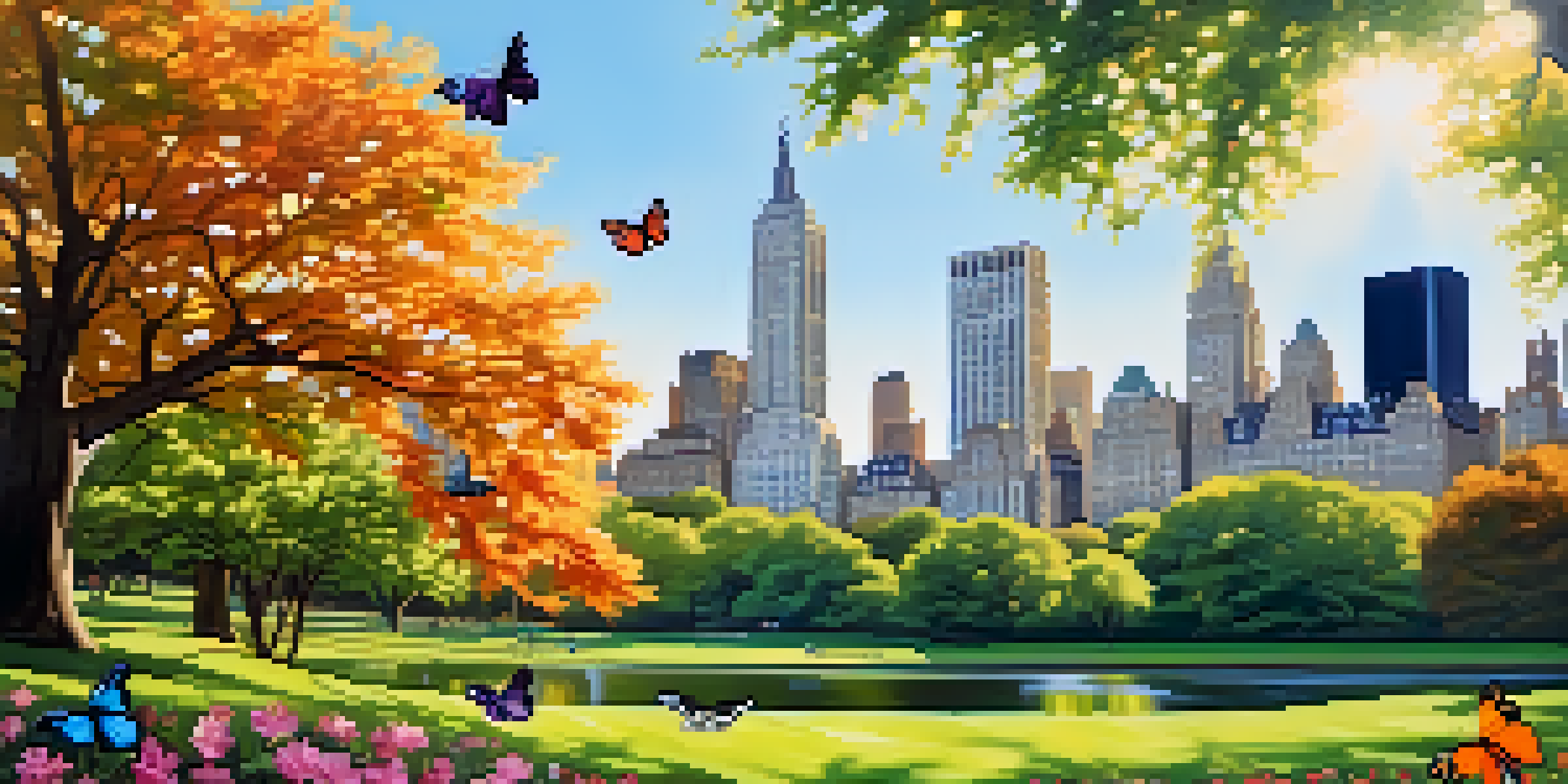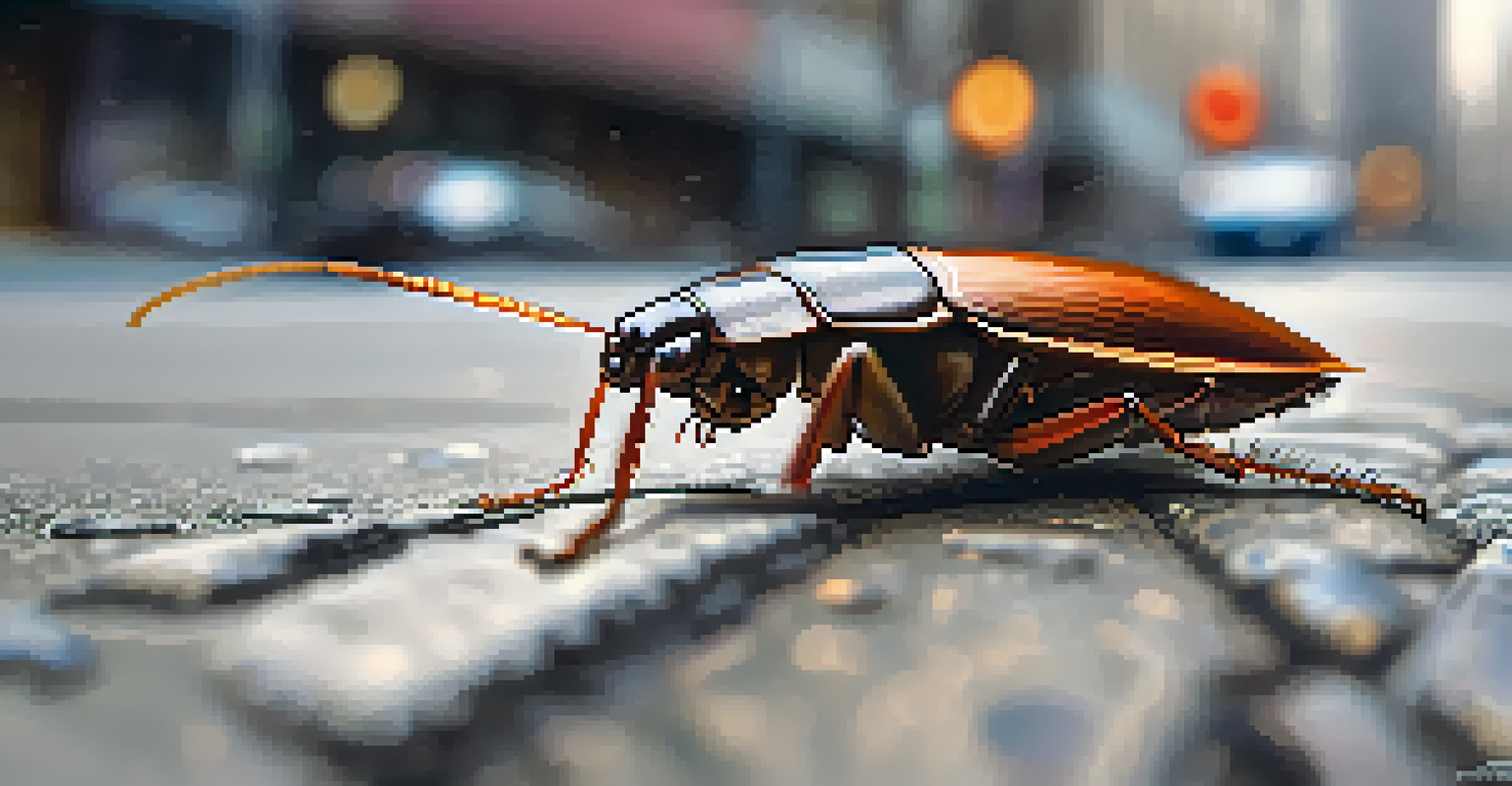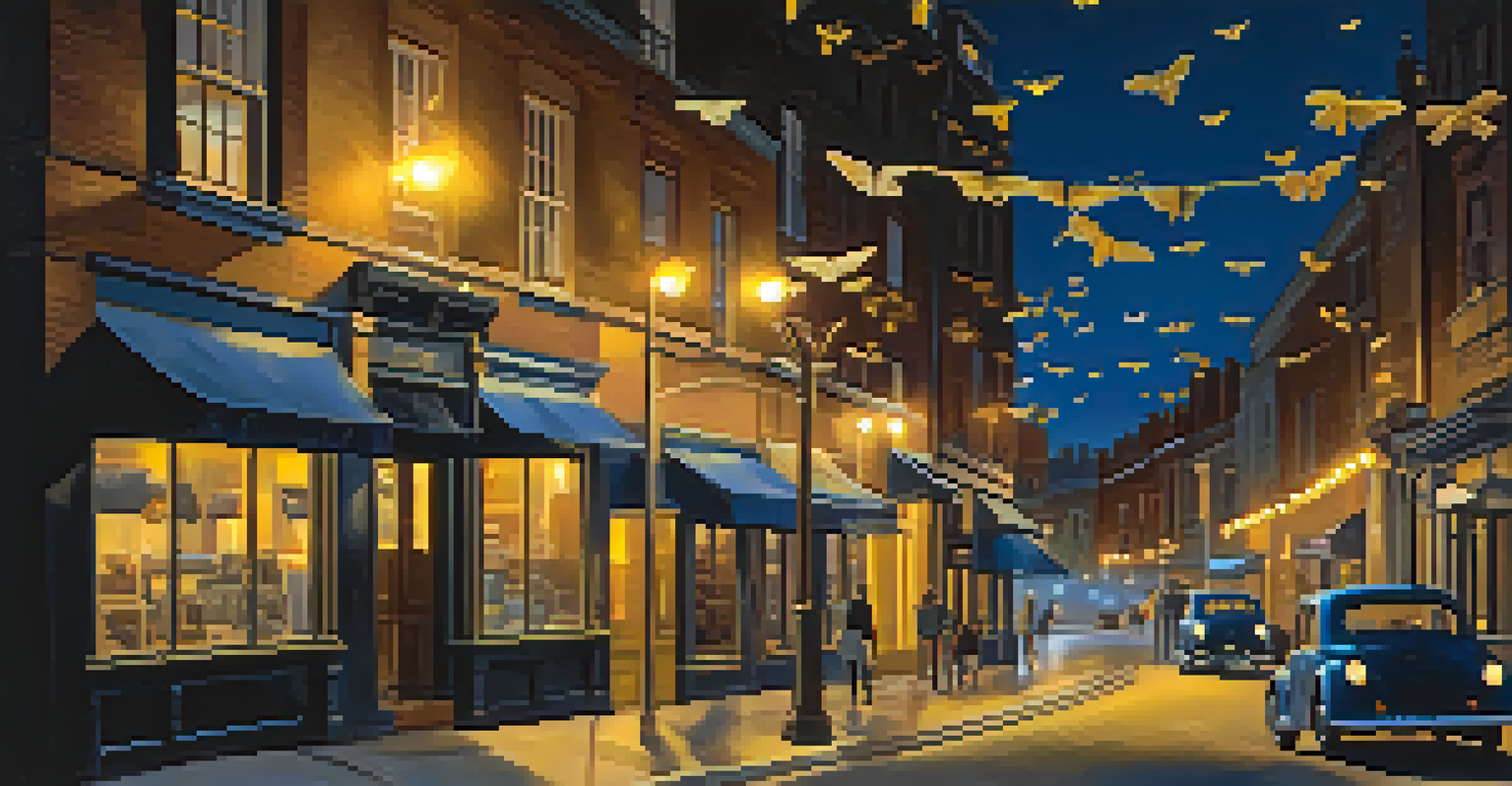New York City's Unique Insect Species: A Hidden World

An Overview of NYC's Diverse Ecosystems
New York City is often celebrated for its skyline, but a hidden world thrives beneath it. The city's diverse ecosystems, from parks to wetlands, serve as habitats for countless insect species. These environments are not just urban jungles; they are crucial for biodiversity, playing host to many organisms that contribute to the local ecosystem.
Insects are the little things that run the world.
Insects are often overlooked in urban settings, yet they play vital roles as pollinators, decomposers, and food sources for other wildlife. The juxtaposition of concrete and nature creates a unique backdrop for these creatures, allowing them to adapt and thrive in unexpected ways. Exploring these ecosystems reveals a rich tapestry of life that many city dwellers may not even know exists.
As we dive deeper into the specifics, we'll highlight some of the most fascinating insect species that call New York City home, showcasing their unique adaptations and the crucial roles they play in NYC's urban ecology.
The Resilient Cockroach: NYC's Iconic Pest
When talking about insects in New York City, one cannot overlook the infamous cockroach. Often seen as a nuisance, these resilient creatures have thrived in the urban environment, showcasing their adaptability. They can survive in harsh conditions and reproduce rapidly, making them a common sight in many neighborhoods.

Interestingly, cockroaches are not just pests; they play a role in the ecosystem by breaking down organic matter. This helps recycle nutrients back into the soil, contributing to the urban ecosystem's health. Their presence serves as a reminder of nature's resilience, even in the face of human development.
Insects Boost Urban Biodiversity
Insects play crucial roles in maintaining the health and resilience of urban ecosystems, contributing to pollination, decomposition, and nutrient cycling.
Understanding cockroaches and their behaviors can change our perception of these insects. Instead of simply viewing them as unwelcome guests, we can appreciate their role in the intricate web of life that exists in our city.
Butterflies: Beautiful Pollinators in the Concrete Jungle
NYC is home to a surprising variety of butterfly species, which add color and life to the urban landscape. Parks like Central Park and Prospect Park provide essential habitats for these delicate creatures, offering nectar-rich flowers and safe spaces for breeding. Butterflies are vital pollinators, helping many plants reproduce.
The butterfly counts not months but moments, and has time enough.
The sight of a butterfly fluttering among city flowers can bring a sense of joy and connection to nature. They are indicators of a healthy environment, as their presence often signifies a balanced ecosystem. Efforts to create butterfly gardens in urban areas have grown, promoting biodiversity and engaging city residents with nature.
By learning about the various butterfly species in NYC, we can appreciate their beauty and importance. Observing these pollinators encourages us to consider how we can foster more green spaces that support both them and other wildlife.
Bees: The Unsung Heroes of Urban Pollination
Bees are essential for pollinating many of the plants we rely on for food, and New York City is no exception. Urban beekeeping has gained popularity in recent years, with community gardens and rooftop hives providing safe havens for these crucial insects. The honey produced by NYC bees is not only delicious but also a testament to the city's vibrant ecology.
Despite their small size, bees have a significant impact on urban agriculture and the health of local ecosystems. They help ensure the survival of flowering plants, which in turn support a variety of other species, including birds and other insects. By fostering bee populations, NYC residents contribute to a more sustainable environment.
Cockroaches' Unexpected Benefits
While often seen as pests, cockroaches help recycle nutrients back into the soil, highlighting their essential role in the urban ecosystem.
Understanding the importance of bees in the city can inspire us to take action, whether by planting bee-friendly flowers or supporting local beekeepers. Every small step helps create a thriving ecosystem that benefits all urban dwellers.
The Secret World of Ants: Nature's Tiny Architects
Ants may be small, but they are some of the most fascinating and industrious insects in New York City. These tiny creatures are often seen working together in colonies, showcasing their remarkable social structures and abilities. Ants play a vital role in the ecosystem, aerating soil and helping with decomposition.
Their collective efforts can be seen in their intricate tunnels and nests, which support not only their colony but also the broader ecosystem. By breaking down organic material, ants contribute to nutrient cycling, ensuring the health of the urban soil. Observing their behavior can reveal the complexity of life hidden in plain sight.
Learning about the diverse ant species in NYC can deepen our appreciation for these remarkable insects. They remind us of the interconnectedness of urban life and the importance of maintaining healthy ecosystems, even in bustling cities.
Moths: The Nighttime Beauties of Urban Environments
While butterflies are often celebrated for their daytime beauty, moths offer a captivating charm of their own, especially at night. NYC is home to many species of moths that flutter around city lights, showcasing their delicate wings and varied colors. These nocturnal insects play a vital role in the ecosystem as pollinators and as prey for other animals.
Moths are often overlooked, yet they contribute significantly to the urban food web. Their larvae, or caterpillars, serve as food for birds and other wildlife, while adult moths help pollinate night-blooming flowers. This hidden aspect of the city's biodiversity is a reminder that even the smallest creatures play important roles.
Bees and Butterflies as Vital Pollinators
Bees and butterflies are essential for pollinating plants in NYC, supporting both local agriculture and the overall biodiversity of the urban landscape.
By appreciating moths and their place in the urban landscape, we can foster a greater awareness of all insect species. Encouraging nighttime habitats and reducing light pollution can help support these nighttime pollinators and enhance the city's ecological diversity.
The Role of Insects in Urban Biodiversity and Conservation
Insects are often the unsung heroes of urban biodiversity, contributing to the health of ecosystems in ways we might not always recognize. By supporting insect populations, we can enhance the overall ecological resilience of cities like New York. This is especially important as urban areas continue to expand and encroach on natural habitats.
Conservation efforts that focus on insects can lead to positive changes in urban planning and landscape design. By incorporating green roofs, pollinator gardens, and native plant species, cities can provide essential resources for these insects. Such initiatives not only support biodiversity but also improve the quality of life for residents.

Understanding the crucial role insects play in urban environments can inspire individuals and communities to take action. By advocating for sustainable practices and supporting local conservation efforts, we can create a healthier, more vibrant city for all its inhabitants.